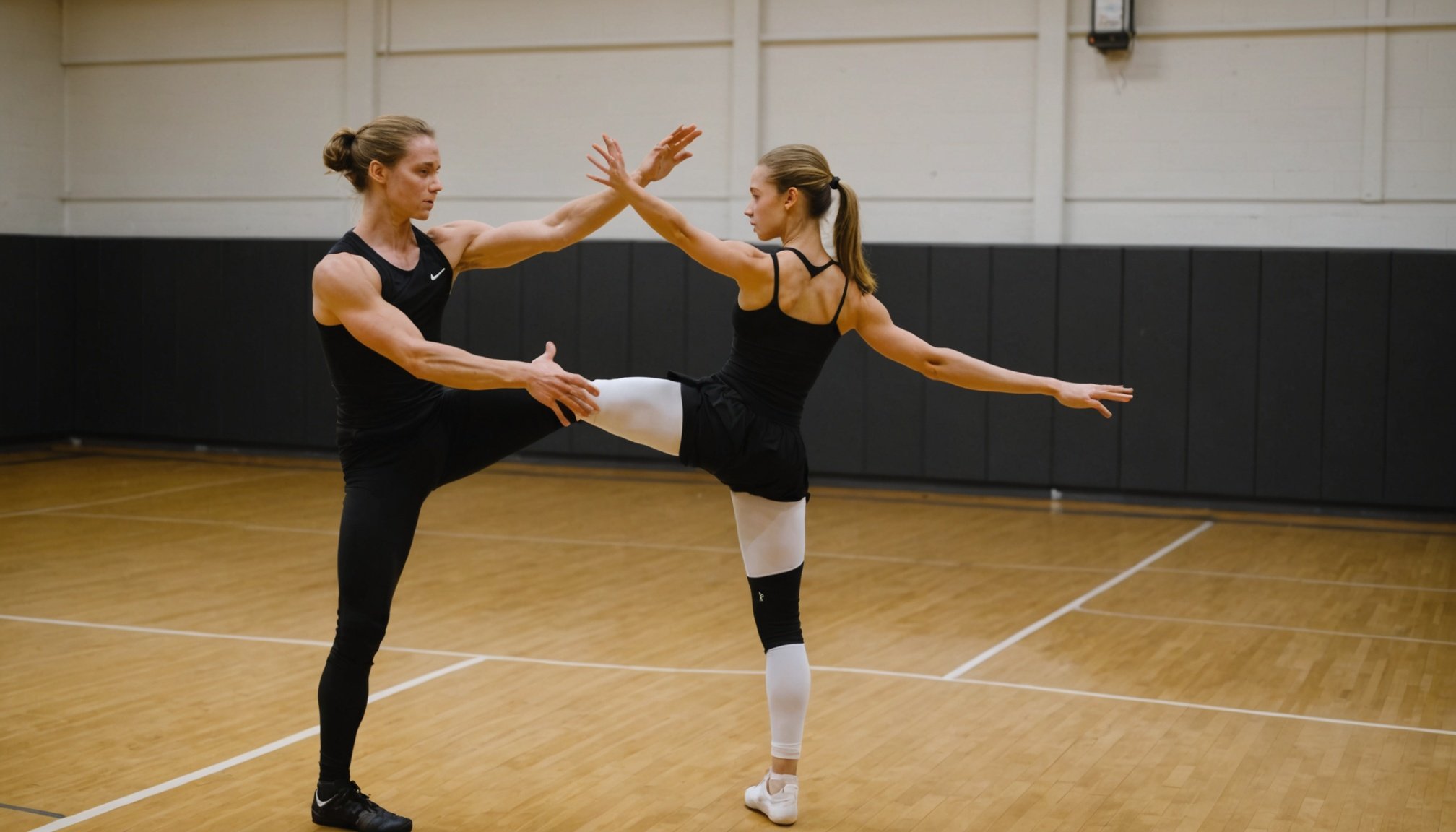Understanding Overuse Injuries in Dancers
Overuse injuries are a prevalent concern in the dance community, largely affecting dancer health. These injuries occur due to repetitive strain on the body, leading to conditions like tendinitis, bursitis, and stress fractures. Dancers are particularly at risk due to the intense and repetitive nature of training and performances, which significantly increases their chances of experiencing such injuries.
Risk factors specific to the dance community include excessive rehearsal hours, inadequate rest, and improper technique. Additionally, the pressure to maintain a certain aesthetic or skill level can lead to overtraining, often exacerbating the likelihood of injury. Understanding these factors can aid in developing better injury prevention strategies.
Additional reading : Unlocking mental mastery: key strategies for boxers to boost focus and confidence ahead of fight night
Recognizing the early signs of injury is crucial in preventing long-term damage. Symptoms such as persistent joint pain, swelling, and decreased performance should not be ignored. By acknowledging these warning signs, dancers can seek appropriate treatment and modify their training routines before conditions worsen.
To ensure optimal dancer health, embracing injury prevention methods is essential. This includes incorporating rest days, practising proper techniques, and engaging in cross-training activities. Addressing these elements can significantly mitigate the risk of overuse injuries and promote a healthier, more sustainable dance career.
Also read : Maximize your muscle growth: how protein timing revolutionizes weightlifting results
Essential Conditioning Techniques for Dancers
To maintain peak dancer health and minimise overuse injuries, incorporating effective conditioning techniques into the training regimen is vital. Strength training builds resilience in muscles and joints, reducing injury risks. Key exercises include squats, lunges, and core stabilisation movements, enhancing overall strength without sacrificing flexibility.
Improving flexibility is crucial for both performance and injury prevention. Stretching regimens should focus on dynamic stretches, such as leg swings and arm circles, before rehearsals. They prepare the body for intense movement by increasing blood flow and improving range of motion. Post-rehearsal, static stretches like the seated forward fold and butterfly stretch promote recovery and prevent stiffness.
Balancing conditioning routines with dance practice ensures dancers do not succumb to overtraining. Aim to integrate strength and flexibility workouts on alternate days. Conditioning shouldn’t be neglected in favour of dance practice; they complement and support dancer performance.
Incorporating these strategies can enhance endurance, strength, and flexibility, reinforcing a dancer’s resilience against the physical demands of dance. Consistently applying these practices can cultivate a well-rounded skill set, enabling dancers to meet physical challenges with confidence. Therefore, a balanced routine that merges conditioning and regular dance practice is indispensable for sustaining a dancer’s health and longevity in their career.
The Role of Warm-Ups and Cool-Downs
Understanding the full scope of warm-up strategies and cool-down techniques is crucial in fostering a dancer’s career longevity. Properly executed routines can significantly enhance injury prevention, allowing dancers to meet the physical demands of their craft.
Effective Warm-Up Strategies
A structured warm-up helps prepare the body physiologically. Dynamic stretching, such as leg swings, walking lunges, and arm circles, increases blood flow, improves range of motion, and reduces injury risks. Such exercises should precede the rehearsal, tailoring the body for the rigorous movements ahead.
Cool-Down Routines
Cool-downs are equally essential, aiding in recovery and preventing stiffness. Post-performance, focus on static stretches like the seated forward fold or butterfly stretch. These help in gradually lowering heart rate and facilitating muscle relaxation.
Benefits of Structured Warm-Ups/Cool-Downs
Research underscores that strategic warm-ups and cool-downs are instrumental in sustaining dancer health. They minimise muscle fatigue, reduce the incidence of overuse injuries, and offer psychological benefits, enhancing mental preparation and focus for subsequent routines. Implementing these practices ensures holistic wellness, safeguarding both body and mind against the rigours of dance.
Mental Conditioning for Dancers
Maintaining peak dancer health involves not only physical but also mental conditioning, which is integral to optimal performance. Mental resilience can be developed through a variety of techniques aimed at fostering mental preparation and enhancing performance psychology. Meditation and visualisation exercises are effective methods, helping dancers focus and manage stress. These practices improve concentration during rehearsals and performances, aiding in injury recovery by promoting a positive mindset.
Mental health significantly influences physical performance. Psychological stress can manifest as physical tension, impacting flexibility and coordination. Acknowledging mental health as a component of overall well-being is crucial. Implementing strategies to address anxiety and fatigue ensures that dancers remain psychologically resilient, thus safeguarding both mental and physical health.
Coping with setbacks due to injury requires tailored strategies. Practising mindfulness and setting realistic goals are essential during recovery, bolstering confidence. Tracking progress encourages a focus on gradual improvement rather than perfection. Leveraging these approaches can help dancers overcome challenges, maintain motivation, and ultimately enhance their performance.
By integrating these mental conditioning techniques into their routines, dancers not only optimise their physical capabilities but also fortify their mental resilience, creating a robust foundation for a successful and fulfilling dance career.
Case Studies and Expert Insights
Delving into expert interviews provides a unique opportunity to learn about successful injury prevention programs and conditioning strategies. Leading professionals emphasise the importance of tailored conditioning plans to bolster dancer health and resilience. For instance, implementing specific strength training exercises designed by seasoned physiotherapists has shown remarkable outcomes in reducing injuries among dancers.
Dancer case studies shed light on notable individuals who have transformed their performance through dedicated conditioning regimes. These success stories underline the necessity of balancing traditional dance practice with rigorous conditioning techniques. Successful dancers often attribute their longevity in careers to a combination of targeted exercises and comprehensive injury prevention methods.
Incorporating insights from expert interviews, renowned ballet instructors recommend a holistic approach to health, involving not just physical conditioning but also mental preparation. By focusing on both the mental and physical aspects, dancers can overcome psychological barriers and improve their overall well-being.
Professional recommendations often highlight the role of specialised conditioning tools and technology in refining dancers’ training processes. As such, dancers are encouraged to leverage available resources that aid in precision and efficiency during their strength and flexibility routines, paving the way for sustained performance excellence.
Actionable Tips and Best Practices
In the world of dance, maintaining optimal dancer health requires adherence to safe dance practices, a disciplined schedule, and effective conditioning routines. Seeking guidance can be challenging, but with practical tips, dancers can develop a balanced regimen.
Weekly Conditioning Schedule
A structured weekly routine is vital for preventing overuse injuries. Include strength training twice weekly, integrating exercises like planks and squats. On alternate days, focus on flexibility exercises to maintain mobility and range of motion. Dedicating one day to rest is crucial for effective recovery and overall well-being.
Tools and Resources for Dancers
Many available resources can further enhance conditioning techniques. Recommended tools include foam rollers for muscle recovery and resistance bands to aid strength exercises. These tools offer practical benefits when incorporated into daily routines, supporting overall dancer health and resilience.
Importance of Cross-Training
Incorporating cross-training improves endurance and reduces the risk of overuse injuries. Activities such as swimming or Pilates provide excellent cardiovascular and core-strength benefits. Cross-training not only complements existing dance practice but also ensures comprehensive injury prevention, enabling dancers to excel safely.
These actionable tips empower dancers to build sustainable practices, promoting longevity and success in their careers. Emphasising these elements ensures dancers can navigate the physical challenges of their art form with confidence.











